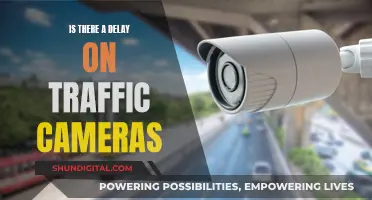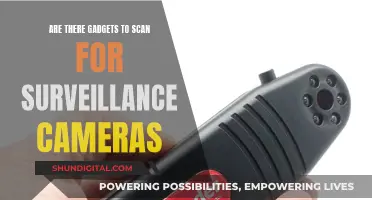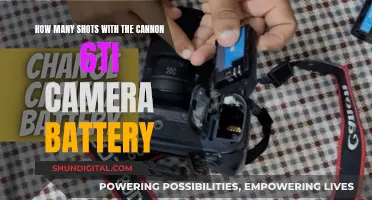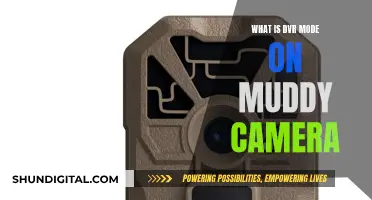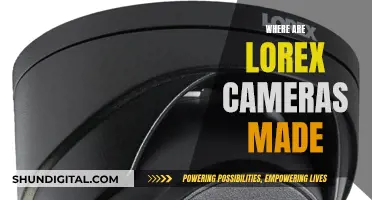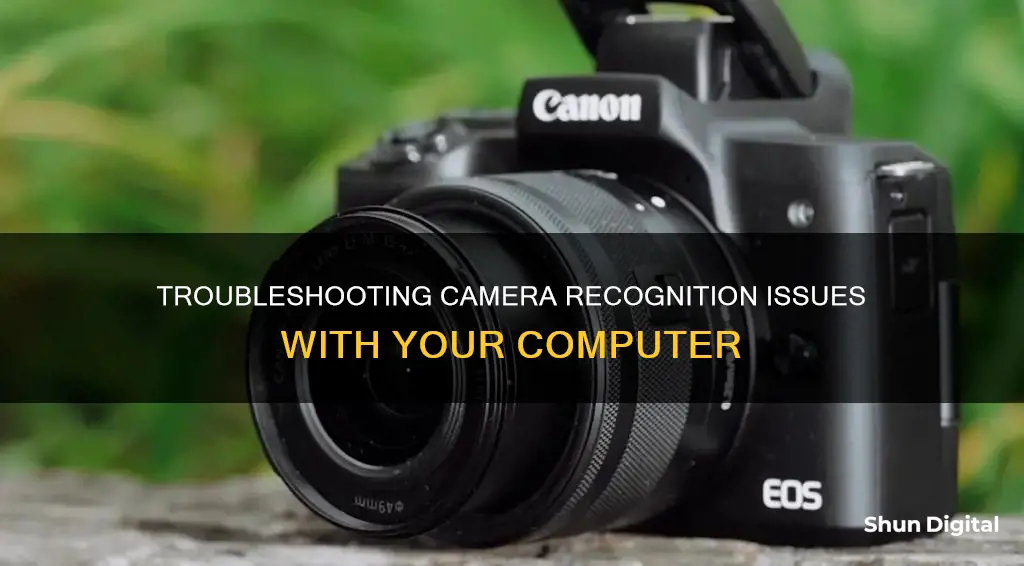
There are several reasons why a computer might not be recognizing a 5D camera. The problem could be related to hardware or software. For instance, the camera might not be detected due to outdated or corrupt USB drivers, faulty USB cables, or incorrect versions of EOS Utility software. If you're using a Windows PC, you can try running the automated camera troubleshooter in the Get Help app, updating Windows, checking your antivirus software, or changing USB ports. If you're using a Canon camera, you can try changing the camera settings, charging the camera battery, or updating the USB controllers.
What You'll Learn

Try a different USB cable
If your computer is not recognizing your 5D camera, it could be due to a faulty or damaged USB cable. To verify this, try using a different USB cable to connect your camera to your computer. Here are some detailed instructions and tips to guide you through the process:
- Use the Right Type of USB Cable: Different types of USB cables are available, such as USB Type-A, Type-B, and USB-C. Make sure you use a Micro-B plug USB cable for your camera, as this type is commonly used for connecting small digital devices like cameras to a computer.
- Check the Cable Condition: Inspect the USB cable for any visible signs of damage, such as frayed wiring or broken connectors. If the cable appears damaged, it's best to replace it with a new one.
- Try a Different Cable: If you have another USB cable of the same type, try using it to connect your camera to the computer. This will help you determine if the issue lies with the cable itself.
- Use a Recommended Cable: It is always recommended to use the USB cable that came with your device. These cables are designed specifically for your device and ensure compatibility. If you don't have the original cable, refer to your camera's manual to check the supported USB cable types and purchase a recommended one.
- Avoid Low-Quality Cables: When purchasing a new USB cable, make sure to buy from a reliable manufacturer. Low-quality cables may not meet safety standards and could potentially damage your devices.
- Check Cable Compatibility: Ensure that the USB cable you're using is compatible with your camera and computer. For example, USB3.0 cables are backward compatible with USB 2.0 devices, but the data transfer speed will be limited to the USB 2.0 standard.
- Try a Different USB Port: If you've tried different cables and the issue persists, the problem could be with the USB port on your computer. Try plugging the camera into a different USB port, preferably one that is directly connected to the motherboard, such as a USB port on the back of a desktop computer.
- Restart Your Devices: Before giving up on a cable, try restarting both your camera and your computer. Sometimes, a simple restart can reset any temporary glitches that might be causing the connection issue.
- Clean the USB Ports: Over time, dust and dirt can accumulate in the USB ports, hindering proper connections. Use a can of compressed air to gently clean the USB ports on your camera and computer.
- Check for Loose Connections: Ensure that the USB cable is firmly plugged into both the camera and the computer. Sometimes, a loose connection can cause the devices to not recognize each other.
Remember, if you're using an external camera, it's always a good idea to start your troubleshooting by trying a different USB cable and port. This will help you narrow down the issue and determine if it's related to the cable, port, or something else.
Understanding Camera's Depth Mode: How It Works
You may want to see also

Try a different USB port
If your computer is not recognising your 5D camera, there are a few things you can try. Firstly, ensure that the battery pack is sufficiently charged before attempting the connection.
If you are using a Windows 10 computer, try connecting the camera to a different USB terminal. If there are multiple USB terminals, connecting the cable to a different terminal may allow the camera to be recognised by the computer.
If you are using a Microsoft Surface Laptop 3, the issue may be caused by the AMD CPU. The EOS Utility software used by the Canon 5D camera does not seem to work well with "USB Port Expanders", which may be the issue if your laptop has one.
If none of the USB ports on your computer are recognising the camera, you can try the following:
- Boot to BIOS and make sure USB ports are enabled (if applicable to your model).
- Reinstall the USB drivers.
- Update the computer BIOS.
- Reinstall the operating system.
To boot to BIOS and ensure that USB ports are enabled:
- Turn on your computer and press the key specified on the screen to "Enter Setup" or "BIOS".
- Look for a reset to default option, usually found under "Maintenance", and accept the reset. Save and exit when prompted.
To reinstall the USB drivers:
- Go to the Control Panel and select "Classic view".
- Select the "System" icon, then the "Hardware" tab, and finally "Device Manager".
- Right-click and select "uninstall" or "remove" all listings that show a "!" or "?". If there are none, expand the "Universal Serial Bus Controller" section and uninstall/remove all USB root hubs, then close everything and restart your computer.
- After the computer has restarted, go back to Device Manager and check if there are any "!" or "?". If not, try the USB port again.
If none of these steps work, you may need to update the computer BIOS or, as a last resort, reinstall your operating system.
Knowing Your Camera's Focus: A Quick Guide
You may want to see also

Turn off Canon Auto Power and Wi-Fi/NFC Settings
If your Windows 10 computer is not recognising your Canon camera, it could be due to a problem with the hardware or software. One way to fix this is to turn off the Canon Auto Power and Wi-Fi/NFC Settings.
To do this, first open the settings in your Canon EOS menu. Then, disable the Auto Power Off and Wi-Fi/NFC options. After this, plug your camera into your computer.
If you are using the free Canon EOS Utility software that comes with the EOS camera series, make sure your camera is charged when connected to your computer. The EOS Utility on Windows 10 won't detect your camera if the battery is low, so you may need to charge it or replace the battery.
You can also try using a different USB cable, as the one you are using may be faulty or incorrect. Use a Micro-B USB cable for Canon cameras. If you don't have the original cable, check your camera manual for a list of supported cables.
If your camera is not recognised by the EOS Utility software, check that you have installed the correct software version for your camera model. You can download the specific EOS Utility software for your camera model from the Canon website.
Focusing Tips for Luma Camera Analog 310
You may want to see also

Charge your camera battery
If your Windows 10 computer is not recognizing your Canon 5D camera, it could be due to a variety of reasons, such as outdated USB drivers, faulty USB cables, or incorrect versions of the Canon EOS Utility software. One of the ways to fix this issue is to ensure that your camera battery is charged. Here are some detailed and direct instructions on how to charge your camera battery:
Charging your camera battery using a USB and wall power net:
- Put the rechargeable lithium battery into the camera slot.
- Switch off the camera.
- Attach the USB charging cord to the camera.
- Attach the USB wall adapter to your USB cord, and then plug it into the wall.
- When the light on the camera turns off, it means the battery is fully charged.
Charging your camera battery using a power bank:
- Ensure you have a power bank with enough power to charge your camera.
- Check that the power bank has a compatible output and that you have the correct charging cable.
- Ensure the power bank can deliver the appropriate voltage for your camera.
- Put the inbuilt battery in the slot and turn off the camera.
- Attach one end of the USB cord to the camera's input port and the other end to the power bank's output slot.
- Check the LEDs or screen display to see if the digital battery is charging.
Charging your camera battery using a computer:
- Refer to your camera's handbook to ensure it can be charged via a computer.
- Put the battery in, switch off the camera, and ensure it has a memory card installed.
- Attach your camera to the USB cord and connect it to the computer's USB port.
- Follow any on-screen instructions that may appear due to the connection.
- A light may turn on at the connecting site to indicate that the camera is charging.
- Your camera battery may take around two to three hours to fully charge.
Tips for charging your camera battery:
- Always keep the battery terminals and camera charging slot clean and dry.
- Turn off the camera before powering it or replacing the battery.
- Do not expose the battery to excessive heat, low temperatures, strong magnetic fields, bright light sources, or lasers.
- Use charging accessories made by the same manufacturer as the digital lithium battery.
- Once the battery is fully charged, unplug the charger and remove the battery from the camera or charger when not in use.
Charging Camera Batteries: Strategies for Dead Rising Players
You may want to see also

Update Windows OS
Updating your Windows OS can be done through the Windows Update Tool, which periodically checks for updates and installs them automatically. Here is a step-by-step guide on how to update your Windows OS:
Step 1: Click on the "Start" button
The "Start" button is usually found at the bottom-left corner of the screen.
Step 2: Open "Settings"
In the Start menu, click on the "Settings" option, which is represented by an icon that looks like a gear.
Step 3: Go to "Update & Security"
In the Settings menu, look for the option that has an icon of two curved arrows. This is usually called "Update & Security."
Step 4: Click on "Check for updates"
In the "Update & Security" section, you will find a button that says "Check for updates." Click on this button, and Windows will start searching for any available updates. If there are updates, they will be downloaded and installed automatically.
Step 5: Install optional updates (if available)
Occasionally, Windows will offer optional updates or new features that you can choose to install. If you see a "Download and install" option below "Feature update to Windows 10," click on it to install these optional updates.
Step 6: Restart your device
After the updates have been installed, it is recommended to restart your computer to ensure that the updates take effect. Save any work you have open and click on the "Restart Now" button if it appears. You can also schedule a restart for a later time by clicking on "Schedule the restart" and choosing a time that works for you.
Additional Tips:
- It is a good idea to update your Windows OS regularly to keep your device secure and fix any bugs or issues.
- Before updating, make sure you have a stable internet connection and enough space on your hard drive.
- If you encounter any problems during the update process, try restarting your computer and running the update tool again.
Understanding DVR Mode on Stealth Cameras
You may want to see also
Frequently asked questions
There are several reasons why your computer may not be recognizing your 5D camera. Here are some possible causes and solutions:
Try using a different USB cable and port. The original cable may be faulty, or you may be using the wrong type of cable. Also, try plugging the camera into a different USB port on your computer.
Ensure that your camera is sufficiently charged when connected to your computer. A low battery may prevent the computer from detecting the camera.
Disable any Auto Power and Wi-Fi/NFC settings on your camera before connecting it to your computer. These settings can interfere with the computer's ability to recognize the camera.
Ensure that your computer's operating system and device drivers are up to date. Outdated software and drivers can cause compatibility issues and prevent the camera from being recognized.


